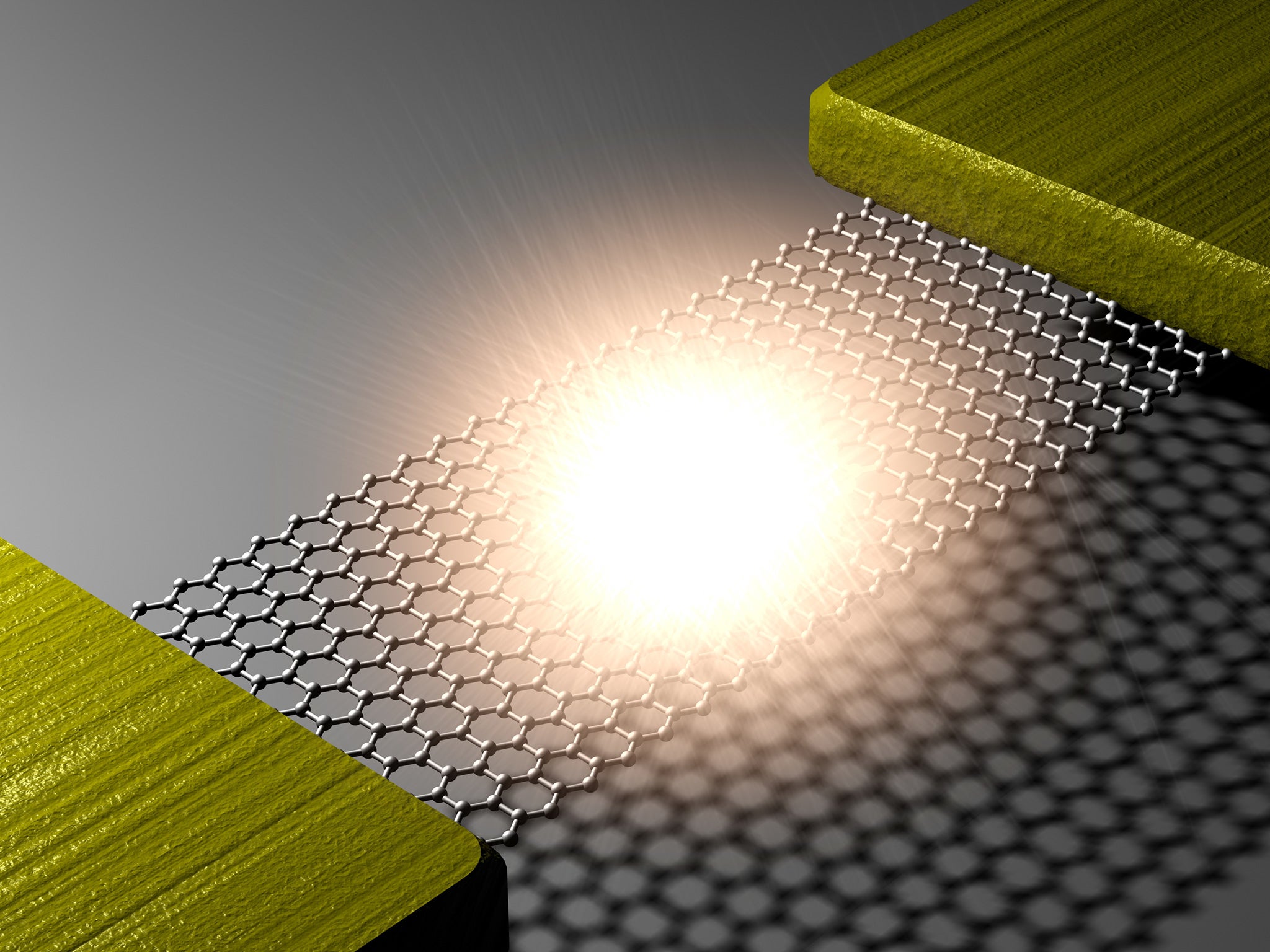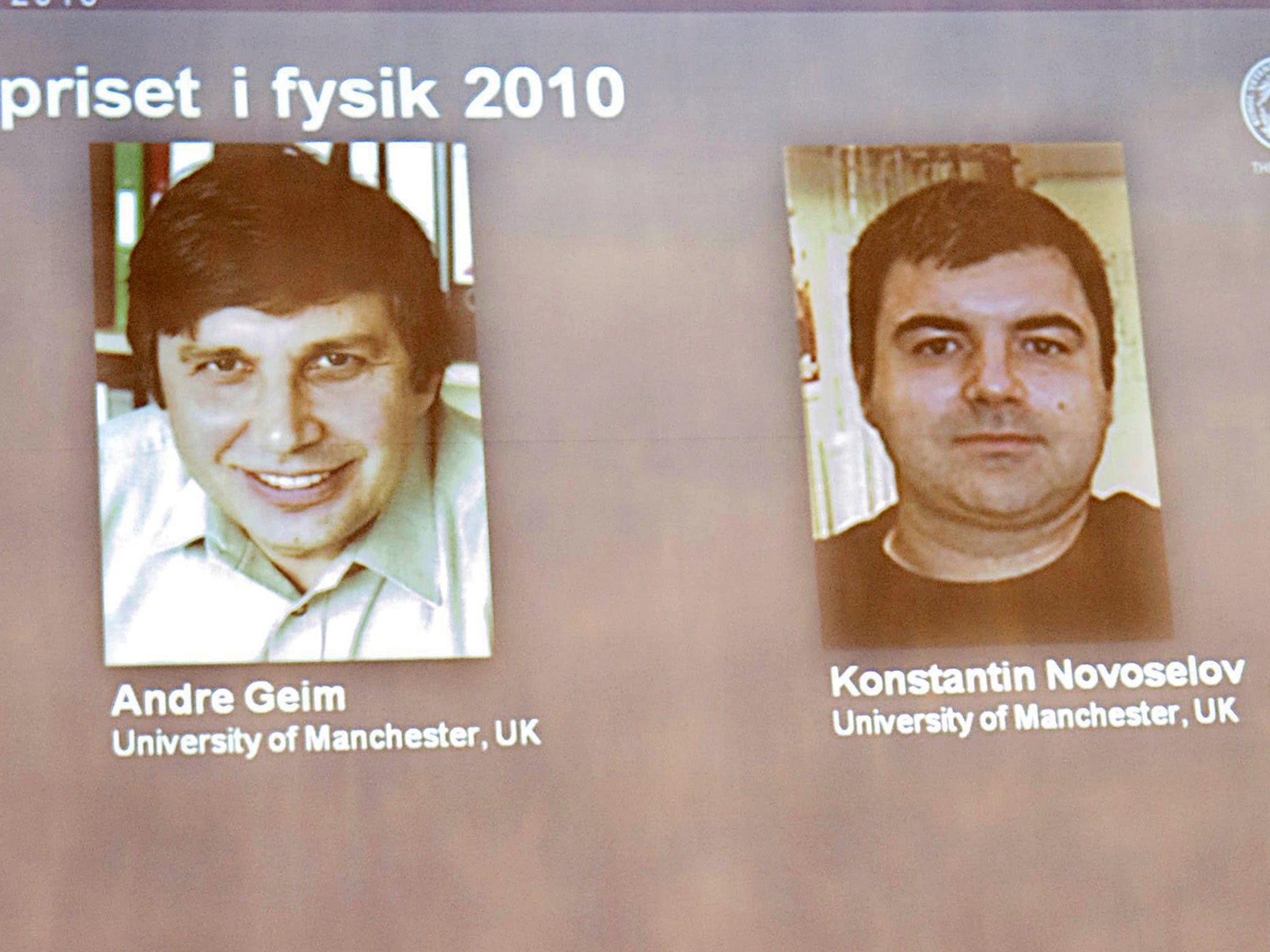Scientists use graphene to create the world's smallest light bulb
The miracle material is a near-perfect conductor of electricity

Your support helps us to tell the story
From reproductive rights to climate change to Big Tech, The Independent is on the ground when the story is developing. Whether it's investigating the financials of Elon Musk's pro-Trump PAC or producing our latest documentary, 'The A Word', which shines a light on the American women fighting for reproductive rights, we know how important it is to parse out the facts from the messaging.
At such a critical moment in US history, we need reporters on the ground. Your donation allows us to keep sending journalists to speak to both sides of the story.
The Independent is trusted by Americans across the entire political spectrum. And unlike many other quality news outlets, we choose not to lock Americans out of our reporting and analysis with paywalls. We believe quality journalism should be available to everyone, paid for by those who can afford it.
Your support makes all the difference.Scientists have created the world’s smallest light bulb from a one atom-thick layer of graphene, the miracle material that promises to transform everything from smartphones and computers to cars, buildings and satellites.
The ultrathin graphene was turned into a superheated filament – just like the thin wire of an incandescent light bulb – which glowed at a temperature of about 2500C.
The light was so intense it could be seen with the naked eye even though it was on the atomic scale, which meant the high temperatures were confined to a tiny “hot spot” and did not damage the silicon chip on which it was mounted, scientists said.
The discovery could be used as the basis of a new kind of switching device for future optical computers that use pulses of light rather than electricity to process and transmit digital information far faster than conventional silicon chips, they said.
It is the first time that scientists have been able to create a computer chip which has its own visible light source, said James Hone, professor of mechanical engineering at Columbia University in New York, co-author of the study published in the journal Nature Nanotechnology.
“We’ve created what is essentially the world’s thinnest light bulb. This new type of ‘broadband’ light emitter can be integrated into chips and will pave the way towards the realisation of atomically thin, flexible and transparent displays, and graphene-based on-chip optical communications,” Professor Hone said.
“We are just starting to dream about other uses for these structures, for example as micro-hotplates that can be heated to thousands of degrees in a fraction of second to study high-temperature chemical reactions or catalysis,” he said.
Graphene, which was discovered by two Russian émigré scientists working at the University of Manchester, is composed of layers of carbon laid down in a lattice structure just one atom thick. It is extremely strong yet lightweight, and a near-perfect conductor of electricity.
The Columbia scientists, working with researchers in South Korea, attached small strips of graphene to microscopic metal electrodes which passed an electric current through the suspended strips causing them to heat up and bright, visible light.
“The visible light from atomically thin graphene is so intense that it is visible even to the naked eye, without any additional magnification,” said Young Duck Kim of Columbia, the co-lead author of the study.

Creating such small light sources on the surface of a computer chip is considered essential for developing the fully integrated “photonic” circuits of optical computers, which will in theory outperform the processing and speed of conventional silicon chips in today’s computers, the researchers said.
The researchers also found that it was possible to vary the wavelengths of the light by altering the distance of the graphene wafers suspended over the silicon substrate of the chip – a potentially useful way of tuning the light source and expanding its “bandwidth”.
“This is only possible because graphene is transparent, unlike any conventional filament, and allows us to tune the emission spectrum by changing the distance to the substrate,” Dr Kim said.
Graphene's Potential
Drinking water
Graphene could be used to desalinate seawater to make it drinkable – tiny pores in its crystal lattice could let water molecules through while blocking salt.
Smartphones
Being both transparent and conductive, graphene could be perfect for the new generation of touchscreens.
Rust-free cars
Graphene repels water and is highly conductive. This combination delays the oxidising reaction that causes rust.
Join our commenting forum
Join thought-provoking conversations, follow other Independent readers and see their replies
Comments